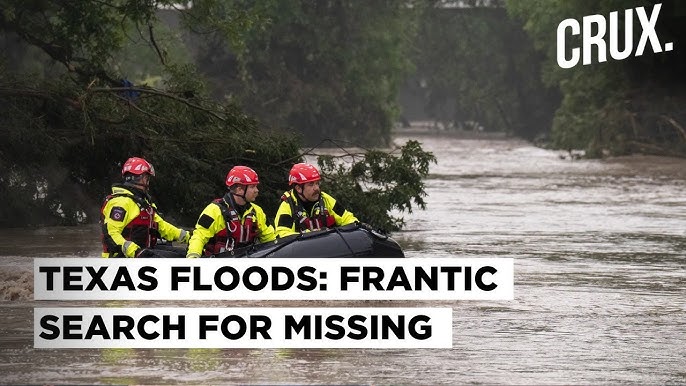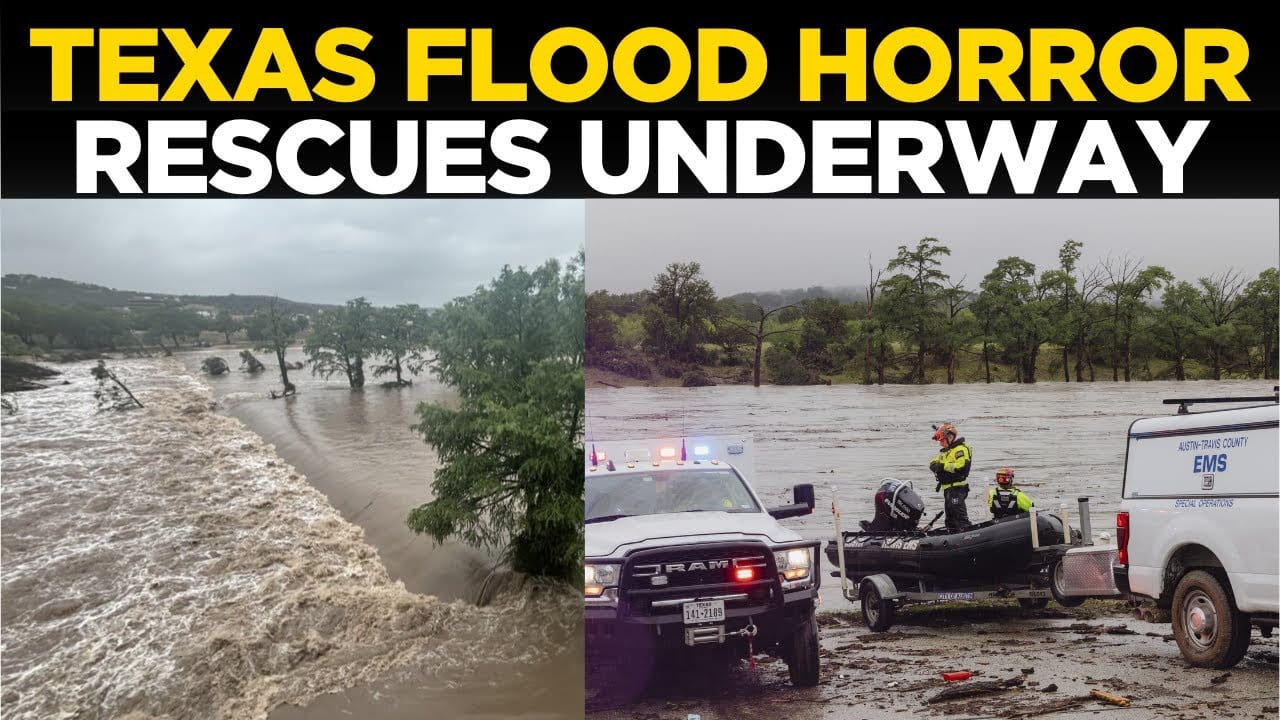Texas has once again found itself grappling with a catastrophic natural disaster. In early July 2025, torrential rains led to historic flooding across Central Texas, resulting in widespread devastation, the deaths of at least 78 people, and the disappearance of dozens more. From small hill country towns to bustling cities, the floods tested the limits of emergency preparedness and raised serious questions about future climate resiliency in the Lone Star State.
This long-form blog dives deep into the event’s causes, the hardest-hit regions, the human toll, and what the tragedy means for cities like Ingleside and beyond.
How It Began: Weather Systems and Storm Mechanics
The flooding began with the remnants of Tropical Storm Barry, which collided with a mid-level atmospheric trough over Central Texas. The result was a rapidly intensifying storm system known as a mesoscale convective complex. This system produced prolonged, intense rainfall over an already saturated landscape.
In just a few hours, more than 10 inches of rain fell in some parts of the Texas Hill Country. Flash flood emergencies were declared across several counties as rivers, especially the Guadalupe River, rose to dangerously high levels.

When Disaster Struck: A Timeline
-
July 3, 2025 (Night): Rain begins falling in Hill Country, with the storm system stalling over Kerr and Gillespie counties.
-
July 4 (Early Morning): The Guadalupe River bursts its banks. Water levels rise at an alarming rate, inundating homes, campgrounds, and roads.
-
July 5–6: Search and rescue operations intensify. Emergency crews are deployed from across the state. Bodies begin to be recovered.
-
July 6–7: The disaster zone is declared a federal emergency. Recovery operations begin in earnest.
Hardest-Hit Regions: A County-by-County Breakdown
Kerr County (Including Hunt, Kerrville, Comfort)
Kerr County, located in the Texas Hill Country, was ground zero for the disaster. Hunt, a small community situated along the Guadalupe River, was among the first areas overwhelmed. In Kerrville, one of the largest cities in the region, homes, schools, and public buildings were submerged in muddy water.
In Comfort, a historically quiet town, the river swelled nearly 30 feet, destroying bridges and sweeping away cars and livestock.
Travis County (Austin and Suburbs)
Although Austin avoided the worst of the storm, outlying suburbs experienced significant street flooding. Several residents had to be rescued from flooded homes in Pflugerville, Lakeway, and Manor. Emergency sirens were activated in some areas, and evacuation shelters were opened.
Burnet County
In Burnet, rising waters from tributaries to the Colorado River caught residents off guard. Three deaths were reported here, including an elderly couple whose vehicle was swept away.
Tom Green, Williamson, and Kendall Counties
These counties reported isolated flooding, but it was no less tragic. Several roadways collapsed under pressure, and multiple people were killed attempting to cross low-water crossings.
Camp Mystic Tragedy
One of the most heartbreaking elements of the flooding was the destruction of Camp Mystic, a beloved Christian summer camp near Hunt, Texas. On the night of July 3, 140 campers and staff members were asleep in cabins just yards from the Guadalupe River. When floodwaters hit in the early hours, several cabins were swept away before anyone could react.
Many young girls, aged between 8 and 14, were separated from their groups in the chaos. At least five confirmed child deaths have been linked to the camp, and several others remain missing. A young counselor, who stayed behind to help the girls escape, was later found dead several miles downstream.
Rescue workers described the scene as “apocalyptic,” with overturned bunk beds, shattered canoes, and children’s belongings tangled in the trees.
Statewide Death Toll and Missing Persons
As of the latest count, 78 people have been confirmed dead due to the floods across Texas. This figure includes at least 28 children. More than 40 people remain missing, including 11 campers and one counselor from Camp Mystic.
The death toll is expected to rise as floodwaters recede and recovery teams search remote areas. Hundreds of people were rescued, including 237 airlifted by helicopter. Thousands have been displaced, and the full economic cost is estimated to exceed $2 billion.
Emergency Response: What Went Right—and Wrong
Weather Warnings and Forecasts
The National Weather Service issued flash flood watches for Central Texas several hours before the storm. However, the warnings may not have adequately conveyed the intensity of the event. While predictions called for 6–7 inches of rain, many areas received double that amount.
Some emergency systems failed to activate on time. Notably, Kerr County did not have outdoor warning sirens, and several residents reported receiving no alerts whatsoever on their phones or radios.
Local and Federal Response
Texas Governor Greg Abbott declared a state of emergency and called for a day of mourning. FEMA dispatched rescue teams, drones, helicopters, and boats to the affected areas. President Trump, during a press briefing, pledged full federal assistance, including grants to rebuild schools, roads, and hospitals.
Despite the massive mobilization, many residents say the response was too slow. Some families waited more than 36 hours for rescue, relying on neighbors and volunteers to reach safety.
Ingleside’s Role: A Coastal City Reflects
While Ingleside, a small city on the Texas Gulf Coast, was not directly impacted by the floods, it offers a vital perspective on emergency preparedness. With a population of roughly 9,500, Ingleside is vulnerable to tropical storms, hurricanes, and flash floods.
City officials in Ingleside have taken the recent tragedy as a wake-up call. As part of a new initiative, Ingleside is reviewing its flood evacuation plans, updating drainage systems, and investing in outdoor alert sirens.
Residents have expressed increased interest in emergency preparedness seminars, and local schools are integrating flood safety education into their curriculum.
Though hundreds of miles from Kerrville, Ingleside stands as a reminder that no community is too far away to be affected—or to take action.
Economic and Infrastructural Damage
Beyond the tragic loss of life, the flooding has left a lasting economic scar on Texas:
-
Roadways: Dozens of bridges and roads, especially near the Guadalupe River, have been completely washed out.
-
Public Facilities: Schools, hospitals, and municipal buildings in at least five counties have been rendered unusable.
-
Homes: More than 2,500 homes have been reported destroyed, with thousands more damaged.
-
Utilities: Power outages affected over 150,000 customers at the peak of the flooding.
Insurance adjusters and government officials estimate property damage will exceed $2 billion, not including long-term economic loss from displaced families and shuttered businesses.
Community Resilience and Volunteers
Texans, known for their grit and unity, responded with compassion and speed. Hundreds of volunteers from unaffected cities like San Antonio, Houston, and Corpus Christi mobilized to provide food, clothing, and shelter.
Rescue teams were joined by private citizens with boats, drones, and off-road vehicles. Social media played a huge role in coordinating search efforts, while Elon Musk’s Starlink technology provided emergency internet access in areas where cell towers were down.
Mental health professionals have been dispatched to affected areas to help survivors cope with trauma and grief.
Climate Change and Future Outlook
Meteorologists and climate scientists say events like this will become more common as the planet warms. Warmer oceans feed more moisture into storm systems, increasing the likelihood of intense rainfall and flooding.
Texas must consider long-term investments in:
-
Flood-resistant infrastructure
-
Comprehensive river monitoring
-
More effective weather alert systems
-
Urban planning that avoids development in flood-prone areas
Additionally, counties that historically viewed themselves as “low risk” must now prepare for events previously thought improbable.
Lessons Learned and Call to Action
The July 2025 floods have devastated families, erased landmarks, and shaken a state known for resilience. From the riverbanks of Hunt to the quiet neighborhoods of Ingleside, every Texan has been affected—either directly or emotionally.
The event has taught us that flood risks are evolving, emergency systems must improve, and communities must come together not just in tragedy but in planning. If we ignore these lessons, the next disaster may be even more severe.
This tragedy is a call not only to mourn but to act—to demand better warning systems, smarter infrastructure, and climate-adaptive policies. Because if it can happen in Kerrville, it can happen anywhere.











Leave a Comment